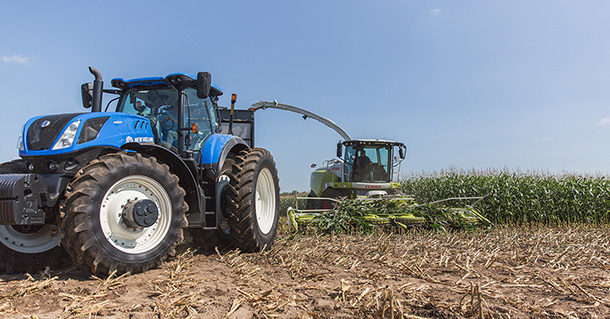The majority of grazing lands receive no fertilizer of any kind, with the resulting low forage yield/lower daily rate of gain being widely accepted on land with low perceived value. At AgroLiquid, however, we are discovering that even a very modest rate of our products applied at the right time results in a large return on investment.
Why?
All of the meat and milk animals that consume forages are, in fact, designed to consume forages – not grains. So even though we do supplement ruminant animal diets with grain, these animals must still have forage as a major component of their diets. Normally when a grower or agronomist is asked why we fertilize forages, the answer will be to obtain higher yields. While that is important, what if we could actually increase the quality and digestibility while at the same time increasing yield?
Our answer is yes – yes we can.
We can, in fact, increase yields and at the same time increase the digestibility and energy content of forage crops. In our trials, here is what we are discovering:
- We increase the sugars, protein, and palatibility in grass hays, and the actual Neutral Detergent Fiber (NDFD) digestibility also improves substantially.
- On alfalfa we routinely achieve an increase in protein, lower lignin, higher water soluable carbohydrates (sugars), significantly higher Relative Feed Value (RFV) and Relative Forage Quality (RFQ) numbers, higher NDFD tests, and more extractable net energy.
- On permanent grass pastures we see strong yield and quality responses to low and economical rates of High NRG-N, Pro-Germinator, Sure-K, and fertiRain.
- We do not yet have enough data to determine if AgroLiquid nutrients have similar effects on corn and sorghum silages. More silage trials are planned in 2018.
What is the value to the beef cow/calf, feedlot manager, or dairyman for quality and digestibility improvement in their forages – even their low value forages such as “grinder hay”? Here are some interesting numbers as an example: Every one whole number increase in the alfalfa NDFD test increases milk production by a half pound more milk per day. We often see an eight point increase in the NDFD score in alfalfa treated with a foliar AgroLiquid program. So if we were feeding a ration with 100% of that alfalfa, the cows would produce four pounds more milk per cow per day. But in real life alfalfa is fed at an average of closer to 25% of the total mixed ration on large dairies. If a dairy operation with 2,000 cows in lactation is feeding alfalfa at 25% of their total mixed ration, here is how the math works: 4 pounds times 25% = 1 more pound of milk per cow per day. On this dairy that’s 2,000 more pounds per day. Milk is priced per hundredweight, so that’s 20 more pricing units per day times current “mailbox” price of $18 (varies by state) = $360 more per day = $131,400 more per year. In this example, based on a real operation, their extra cost was $15,000 per year (replacing a portion of their standard dry program) which netted them $116,400.
One significant factor we are learning in our many trials is that when individual AgroLiquid products replace the comparable commodity fertilizer product, it will, in most situations, improve the forage quality. For example, if Pro-Germinator replaces 11-52-0 on a grass pasture, the quality of the grass will be better. Likewise if Sure-K replaces or reduces dry potash, the forage treated with Sure-K will have better quality. Where High NRG-N has replaced urea or UAN, the resulting grass pasture or hay will have higher quality, a larger root mass, and more consistent growth. Can an AgroLiquid program entirely replace a commodity dry program? Yes it can – but you may not always want to. For example, when we have tested yield and quality results where Sure-K is used as a supplemental foliar treatment following a top-dress application of dry potash, we usually see a significant increase in yield and quality versus the dry potash alone. So where soil test K is low, we can use dry potash and Sure-K to the grower’s advantage. On the high pH soils of the Central Plains, however, Pro-Germinator clearly performs better than 11-52-0, achieving both higher yields and improved forage quality, and should be recommended as full replacement for the dry. ![]()
Dan Peterson is the field agronomy manager for Agro-Culture Liquid Fertilizer.









